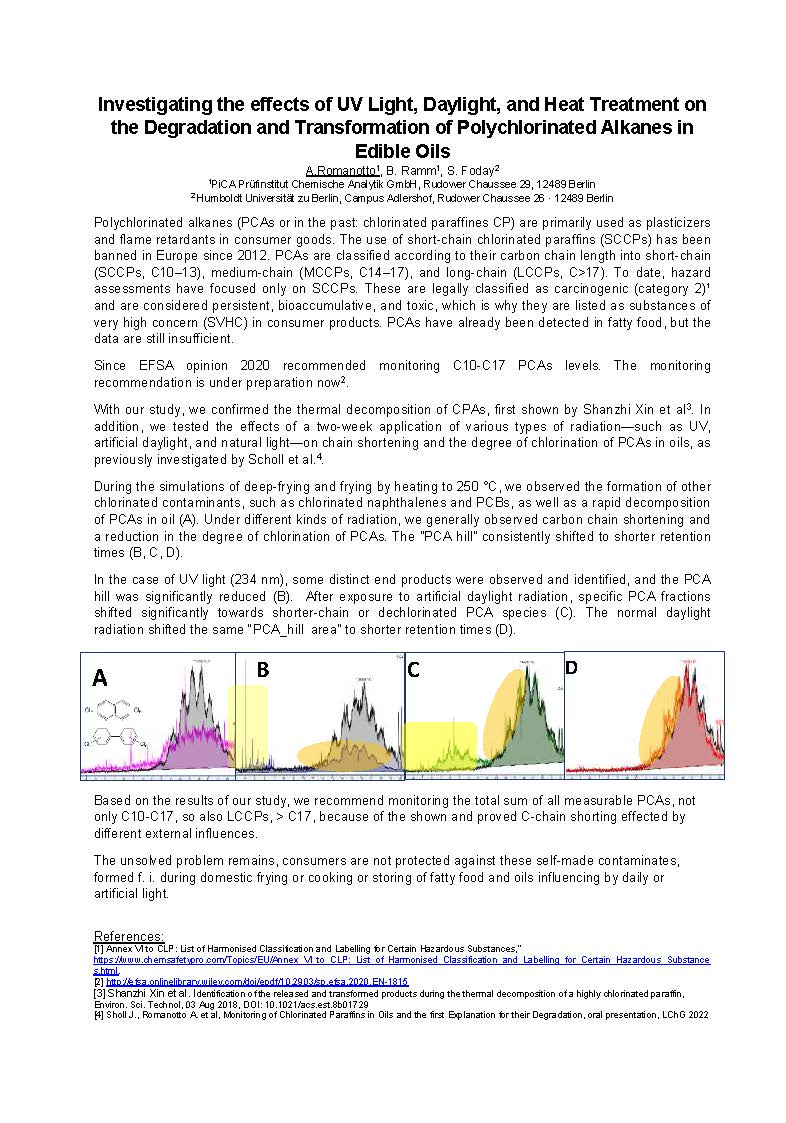Polychlorinated alkanes (PCAs or in the past: chlorinated paraffines CP) are primarily used as plasticizers and flame retardants in consumer goods. The use of short-chain chlorinated paraffins (SCCPs) has been banned in Europe since 2012. PCAs are classified according to their carbon chain length into short-chain (SCCPs, C10–13), medium-chain (MCCPs, C14–17), and long-chain (LCCPs, C>17). To date, hazard assessments have focused only on SCCPs. These are legally classified as carcinogenic (category 2)¹ and are considered persistent, bioaccumulative, and toxic, which is why they are listed as substances of very high concern (SVHC) in consumer products. PCAs have already been detected in fatty food, but the data are still insufficient.
Since EFSA opinion 2020 recommended monitoring C10-C17 PCAs levels. The monitoring recommendation is under preparation now2.
With our study, we confirmed the thermal decomposition of CPAs, first shown by Shanzhi Xin et al3 . In addition, we tested the effects of a two-week application of various types of radiation—such as UV, artificial daylight, and natural light—on chain shortening and the degree of chlorination of PCAs in oils, as previously investigated by Scholl et al.4.
During the simulations of deep-frying and frying by heating to 250 °C, we observed the formation of other chlorinated contaminants, such as chlorinated naphthalenes and PCBs, as well as a rapid decomposition of PCAs in oil (A). Under different kinds of radiation, we generally observed carbon chain shortening and a reduction in the degree of chlorination of PCAs. The “PCA hill” consistently shifted to shorter retention times (B, C, D).
In the case of UV light (234 nm), some distinct end products were observed and identified, and the PCA hill was significantly reduced (B). After exposure to artificial daylight radiation, specific PCA fractions shifted significantly towards shorter-chain or dechlorinated PCA species (C). The normal daylight radiation shifted the same “PCA_hill area” to shorter retention times (D).
Based on the results of our study, we recommend monitoring the total sum of all measurable PCAs, not only C10-C17, so also LCCPs, > C17, because of the shown and proved C-chain shorting effected by different external influences.
The unsolved problem remains, consumers are not protected against these self-made contaminates, formed f. i. during domestic frying or cooking or storing of fatty food and oils influencing by daily or artificial light.
